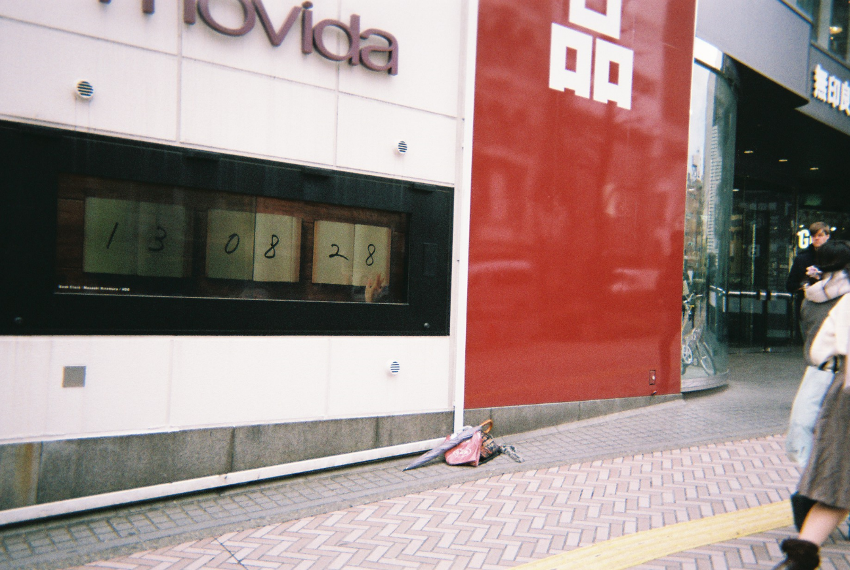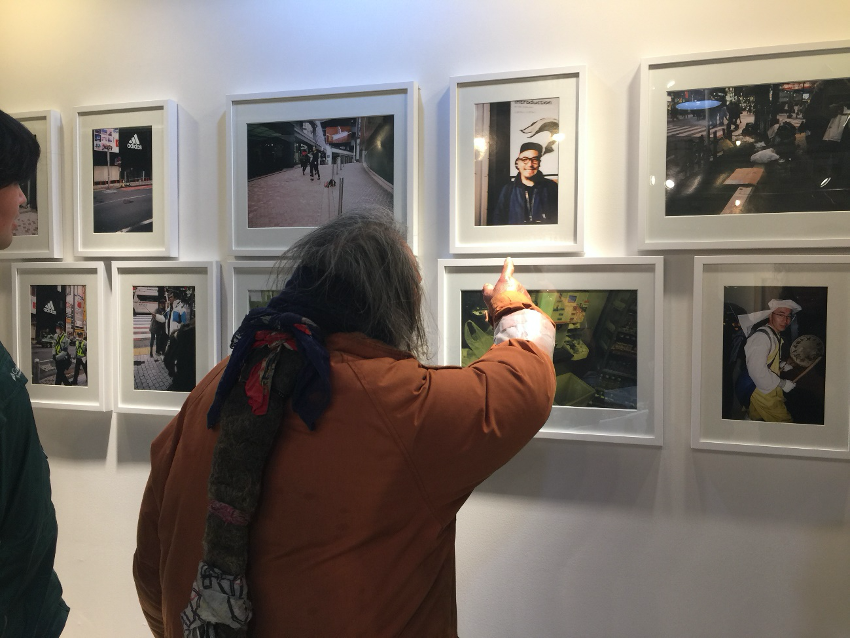Note: This website was automatically translated, so some terms or nuances may not be completely accurate.
Is rationality essential to business? Is "retinal beauty" essential to art?

Yuki Wazano
In Parts 5 and 6 of the "Art in Business: The Front Lines" series, we present a contribution by Dr. Yuki Wasano, a physician and member of the Art Circuit (※), exploring the theme "Our Relationship with Art."
(※) Art Circuit: An art unit supporting business creation that incorporates art power. Dedicated website.
**
Nice to meet you. I'm Yuki Wasano, a member of Bijutsu Kōro.
I'm not sure what my main job is, but while working as a physician, I also direct an art project called "PROJECT501" and conduct research in the fields of art, business, and society. Recently, I was accepted into the Daikanyama Rotary Club, so I'm considering adding "Rotarian" to my list of titles.
I've jumped right into a lot of things.
Now, when you think of medicine, art, and business, they probably seem unrelated to most people. And even from my perspective, involved in all three, I don't see a direct connection at this point.
But I actually believe that medicine, art, and business are fundamentally the same thing.
The origin of the word "business" comes from the Anglo-Saxon term "bisignisse," which means "care" or "anxiety" – essentially, "worry, unease, and dealing with it." These days, "business" tends to be seen as if economic rationality were an absolute requirement. But originally, I think it was about "worrying about and paying attention to" others, which "ultimately" brought value and led to recognition.
Viewed this way, healthcare is quite faithful to the literal meaning of "business," and art is the prime example. Artists keenly observe others and society, extract insights or dissonance from these observations, and actively engage with the world outside themselves by involving others through the medium of expression. In that sense, it feels like business in its purest form.
"The purpose of business is not the pursuit of economic rationality."
That's what I believe.
Carefully observing others, society, and the world—including oneself—and meticulously checking for concerns. As I wrote earlier, I believe the purpose of business lies in "actions that bring value to others," born from imagination.
The economic evaluation follows as a result. Economic rationality directly leads to autonomy, creating a cycle that allows for the continuation of better business.
In a way, this essential framework tends to be overlooked during times of economic prosperity or positive social sentiment. However, in periods like the present, where shared global crises like the planet being in danger are emerging, perspectives on business evaluation with a longer time horizon—such as the SDGs or social impact investing—tend to regain prominence. That's precisely why I think altruism feels more tangible in times like these.
Incidentally, the same holds true in art, where it's said that "beauty is not something to be pursued as an end in itself, but something that resides as a result." The admonition "don't be distracted by retinal beauty" is something many artists since the 20th century have echoed.

On a platform mounted on the wall sits a single apple (real?) and the hand supporting it (probably real). This implies someone might be standing behind the wall, facing it, and suggests the act of embedding that hand into the wall may have occurred. As you watch, you're drawn into a new experience that shakes up some pretty fundamental feelings about human existence: How much of the world we think we see is actually real? Who is seeing and who is being seen? Where exactly are the boundaries of this world? Art is also a magical device that makes the world we thought we knew look completely different.
That's right. When we think of art, we often assume its value lies in beauty, but that's not necessarily the case.
As I wrote in "Art in Business: The Power of Art That Works for Business," which I co-authored, I believe the essence of art lies in "posing questions." This is often said, but I truly feel it. And I sense that quality artists are professionals at posing questions.
Artists aren't professionals at painting; they're professionals at posing questions.
Artists possess profound knowledge of things. And they observe the world with extraordinary intensity.
They tirelessly, day and night, keep their eyes on the world's movements, people's expressions and reactions, the present state of the world, and its future, all centered around themes they've set within themselves. People often think artists are just good at drawing, but I feel they're more than that—they're pros at observation, and pros at setting questions based on that. In a way, they're incredibly persistent, yet flexible.
There's an art collective called "SIDE CORE" that explores the city through the lens of graffiti and skateboard culture, with the theme "How to Play in the City." They deliberately avoid fixed members, evolving their composition over time, making them a truly innovative and contemporary organization. One group within it, "EVERYDAY HOLIDAY SQUAD," created work themed around Shibuya. They actually handed cameras to homeless people living in Shibuya, letting them take photos, which were then exhibited as part of their work.
These photographs captured the streets of Shibuya we walk through, framed in ways we'd never seen before, making them incredibly fresh. They don't make statements about urban development in the Shibuya area, nor do they loudly advocate for issues surrounding homelessness. They simply present a flat observation: "You can see the city like this too."
But seeing them inevitably makes us think about something. I feel that achieving something like this through conventional business methods would be quite difficult.


The photographs taken by Shukan-san, who lives on the streets of Shibuya, show his belongings and the faces of people peering into the lens—faces we don't know. Viewing Shibuya, a place we think we know well, from this entirely new perspective allows us to perceive it in various ways.
I see. It's true—it doesn't convey any obvious message, yet it makes you think.
The viewer's upbringing, environment, current life, work... I believe one of art's characteristics is presenting something with room for interpretation, allowing for completely different perspectives based on countless factors.
There was a time when I worked as a doctor and stubbornly believed I had to aim to cure patients' illnesses and help them live as long as possible. Driven by a sense of mission, I felt compelled to guide patients, telling them what to do. But patients rarely moved as I wanted them to, often refusing to listen. On top of that, I sometimes made them dislike me or lose trust.
Then, one day, it suddenly hit me. I realized I was starting to dislike the patients I couldn't connect with. And I'd overlooked a crucial truth: "You can't get through to someone unless you like them."
I realized that only by taking an interest in the other person and genuinely liking them could I begin to see the world through their eyes. Translating information to match their perspective became essential for effective communication.
It took me about five years after becoming a doctor to realize this. I think I was around 30. I was struggling with the frustration of not being able to communicate effectively, even though I felt my knowledge and experience were starting to come together.
But then it hit me: "Ah, this is just like art."
The work of a doctor is the same as art?
When viewing art, the work contains a wealth of information, and what you interpret from it is left to the viewer's personal context and mood. These interpretations are truly as varied as the viewers themselves, and the artist accepts them all.
No work specifies, "This piece has this meaning and contains this message, so please feel this way." Forcing such an act isn't art to begin with. I believe the work of a doctor, and much of business, is the same.
"You might have this kind of problem."
"You might be able to learn more, but you might not need to know."
"Here are some ways to address it, but what does 'addressing it' even mean?"
Rather than forcing the other person (the viewer, patient, customer) to do something specific, it's about presenting information containing questions like the ones above in a context tailored to them, making it easier to understand. I now believe that the essence of a doctor's work, and the essence of business, is "caring and paying attention" – skillfully conveying these questions and creating opportunities for the other person to think about them as their own concern.
Incidentally, I don't think there's any universal "right way" to convey this. The more uniquely personal and individual the way of communicating is, the more meaningful it becomes.
Furthermore, to communicate as clearly as possible, understanding the other person's perspective is crucial. At its core, curiosity and the ability to develop an interest are also important, I think. This area connects interestingly to the perspective of an art collector, which I'll introduce next time.
So, the story was about how business and art are actually the same thing in unexpected ways.
(Continued in Part 2 )
Reference
Yosuke Amemiya: http://amemiyan.com/
A Stone Carried for 1300 Years: https://ishimochi.com/
SIDE CORE: https://www.facebook.com/SIDE-CORE-295528030850334/
Was this article helpful?
Newsletter registration is here
We select and publish important news every day
For inquiries about this article
Back Numbers
Author

Yuki Wazano
Art Communicator / Physician
Graduated from the School of Medicine, Tokyo Medical and Dental University. Earned a Master of Arts in Art Management from Keio University in 2018. Research theme: Art Marketing. Conducted research on the purchasing behavior of contemporary art collectors. Aims to realize a society that properly perceives the value of art and artists, and to implement a richness that allows individuals to weave meaning into their own existence and the world around them, centered on art. Leads PROJECT501 (http://project501.tokyo/) in Harajuku. Introduces the process collectors undergo to purchase art through narrative. Conducts research on the valuation of artists through various business methods. Hobby: daydreaming. Special skill: reading.

